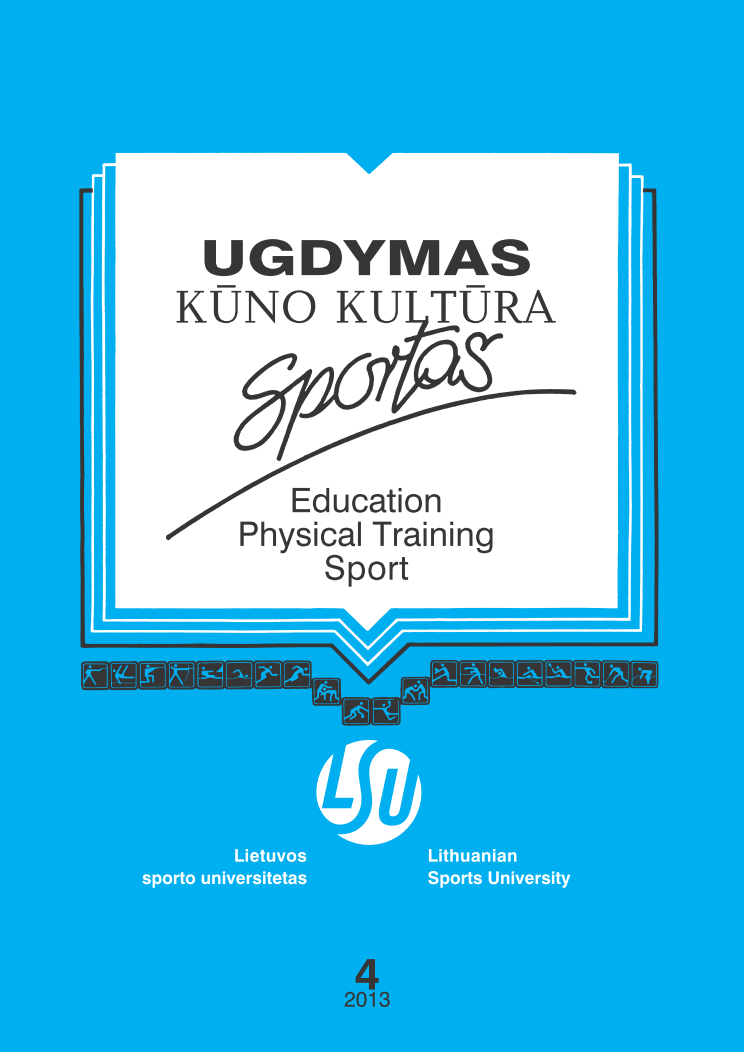The Time Course of Oxygen Uptake, Aerobic Capacity and Emg during Two Months of Moderate Interval Endurance Training (A Case Study)
Abstract
Research background and hypothesis. The low-moderate-intensity continuous endurance training improved
body composition, aerobic capacity and overall health-related parameters in healthy persons. However, we could not
find publications about the effect of moderate interval aerobic endurance training (IET) on body composition, 2 OV&
kinetics, aerobic capacity and EMG parameters.
Research aim. The main purpose of this study was to examine the effect of interval endurance training (IET) on
oxygen uptake kinetics, aerobic capacity, body composition and EMG parameters.
Research methods. A 26-year-old, sedentary obese female (stature – 1.80 m; weight – 99.2 kg; VO 2 max –
37.2 ml/kg -1 /min -1 ) was involved in two-month moderate interval endurance training (IET). The subject performed
three training sessions a week separated by one or two days of rest. The initial intensity of training was 90% of the
first ventilation threshold (VT1). The VT1 and second ventilation threshold (VT2) ware estimated after completion
of incremental running test until exhaustion on a LE 200 CE treadmill (VIASYS, Germany).
Research results. We determined that after two months IET subject’ body mass decreased by 10%, the training
had an effect on aerobic capacity parameters as well. The running speed at VT1 and VT2 increased by 8.1% and
10.2% respectively after the two-month IET programme. The heart rate (165.9 beats/min -1 ) and oxygen uptake
(2.583 l/min -1 ) significantly decreased respectively (150.4 beats/min -1 ) (2.285 l/min -1 ) after IET period compared
with pre-training testing. To indicate the total muscle activity we measured integrated EMG (iEMG) and root mean
square (RMS). We also determined changes on EMG parameters after four, six and eight weeks IET.
Discussion and conclusions. Two-month moderate interval endurance training has significant effect on aerobic
capacity, anthropometrics, EMG parameters and VO 2 kinetics.
Keywords: ventilatory thresholds, maximal oxygen uptake, EMG root mean square.
Downloads
Published
Issue
Section
License
Copyright (c) 2018 Baltic Journal of Sport and Health Sciences

This work is licensed under a Creative Commons Attribution 4.0 International License.






